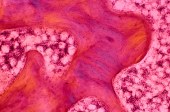
WEDNESDAY, Dec. 22 (HealthDay News) — New research suggests that many cancer cells are equipped with a kind of suicide pill: a protein on their surfaces that gives them the ability to send an “eat me” signal to immune cells.
The challenge now, the researchers say, is to figure out how to coax cancer cells into emitting the signal rather than a dangerous “don’t eat me” signal.
A study published online Dec. 22 in Science Translational Medicine reports that the cells send out the enticing “eat me” signal by displaying the protein calreticulin. But another molecule, called CD47, allows most cancer cells to avoid destruction by sending the opposite signal: “Don’t eat me.”
In earlier research, Stanford University School of Medicine scientists found that an antibody that blocks CD47 — turning off the signal — could help fight cancer, but mysteries remained.
“Many normal cells in the body have CD47, and yet those cells are not affected by the anti-CD47 antibody,” Mark Chao, a Stanford graduate student and the study’s lead author, said in a university news release. “At that time, we knew that anti-CD47 antibody treatment selectively killed only cancer cells without being toxic to most normal cells, although we didn’t know why.”
Now, the new research has shown that calreticulin exists in a variety of cancers, including some types of leukemia, non-Hodgkin’s lymphoma and bladder, brain and ovarian cancers. “This research demonstrates that the reason that blocking the CD47 ‘don’t eat me’ signal works to kill cancer is that leukemias, lymphomas and many solid tumors also display a calreticulin ‘eat me’ signal,” Dr. Irving Weissman, director of the Stanford Institute for Stem Cell Biology and Regenerative Medicine and a co-principal investigator of the study, said in the release. “The research also shows that most normal cell populations don’t display calreticulin and are, therefore, not depleted when we expose them to a blocking anti-CD47 antibody.”
The next step is to understand how calreticulin works. “We want to know how it contributes to the disease process and what is happening in the cell that causes the protein to move to the cell surface,” Dr. Ravindra Majeti, an assistant professor of hematology and study co-principal investigator, said in the release.
“Any of these mechanisms offer potential new ways to treat the disease by interfering with those processes,” Majeti said.
More information
The American Cancer Society has more on cancer.

